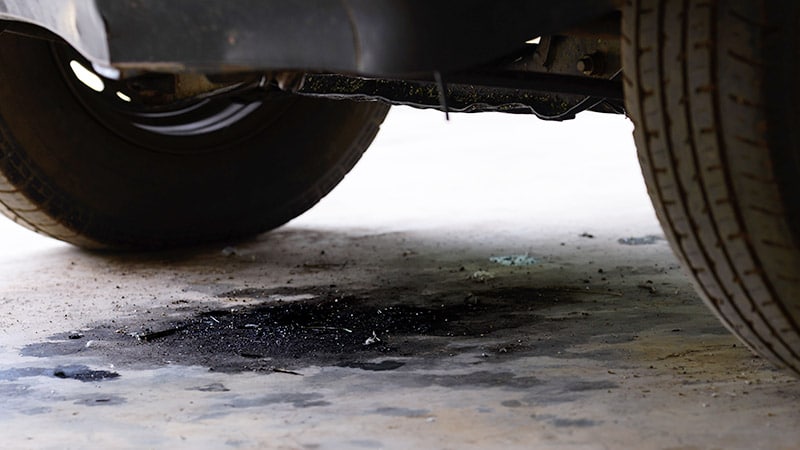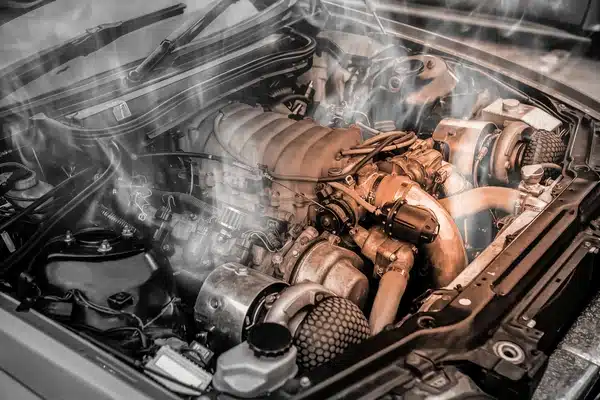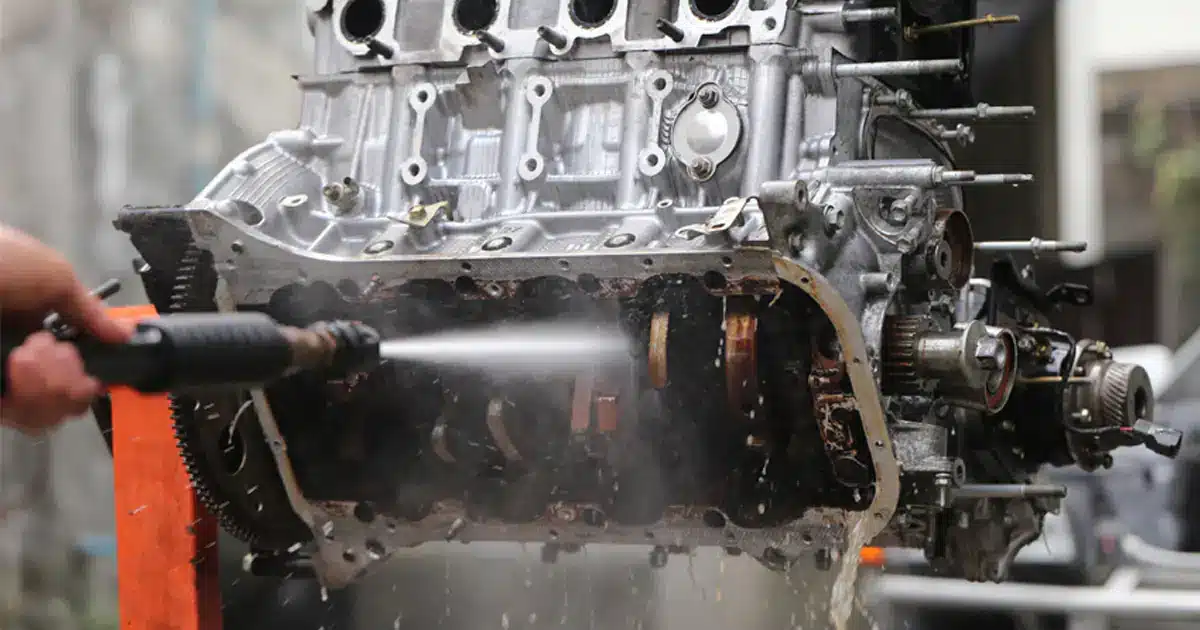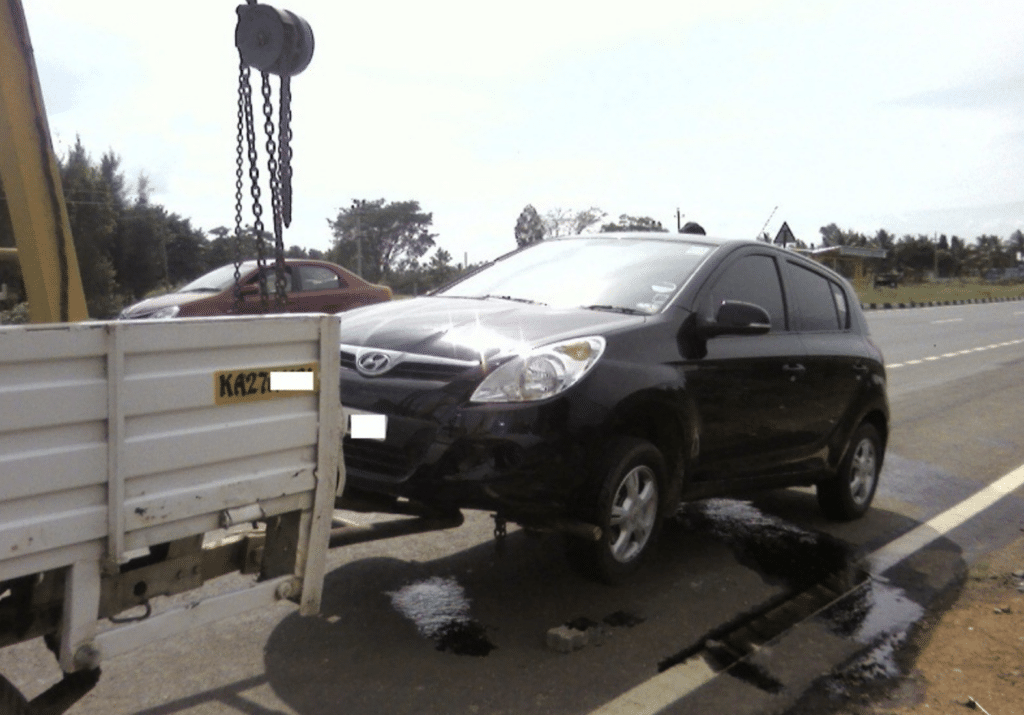If you’ve noticed your car leaking oil, addressing the issue promptly is crucial to prevent serious engine damage and costly repairs.
Oil leaks can stem from various sources, such as degraded gaskets, loose oil pan bolts, or worn valve cover seals.
As a professional mechanic dealing with diverse grievances about vehicle functionality, our team has compiled a list of expert tips to help you identify, prevent, and fix oil leaks, ensuring your engine remains healthy and reliable.
By following these guidelines, you’ll be able to spot the warning signs of a leak early on, take proactive measures to prevent leaks and know when to bring your vehicle to a trusted mechanic.
Implementing these tips will not only extend the life of your engine but also save you money and hassle in the long run. Let’s explore these essential tips in detail.
Understanding Car Oil Leaks: Causes and Symptoms
Causes of Car Oil Leaks

Multiple factors are responsible for oil leaks; we have detailed a few major reasons your vehicle experiences oil leaks in this segment.
1. Crankshaft and camshaft seal leaks
The crankshaft and camshaft are vital components of your engine and are sealed to prevent oil from escaping.
However, these seals can degrade due to age, exposure to heat, or improper installation.
When these seals fail, oil can leak from the front, rear, or top of the engine, depending on the location of the damaged seal. Replacing the faulty seal is necessary to stop the leak.
2. Oil cooler/heat exchanger issues
The oil cooler or heat exchanger helps regulate the temperature of the engine oil.
These components have O-rings or gaskets that can deteriorate over time or suffer damage.
If the O-ring or gasket fails, oil can leak from the cooler or heat exchanger, resulting in oil puddles under the vehicle or oil streams behind it.
Addressing this issue promptly is crucial to prevent further damage and oil loss.
3. Oil pressure sensor failures
The oil pressure sensor monitors the oil pressure within the engine and sends signals to the vehicle’s computer and dashboard light.
If the sensor becomes faulty, it may cause the low oil light to illuminate the dashboard and lead to oil leaking around the sensor itself.
Replacing the faulty sensor is necessary to restore proper oil pressure monitoring and stop the leak.
4. Leaking piston rings or valve seals
Piston rings and valve seals are designed to keep oil within the combustion chambers and prevent it from entering the engine’s intake or exhaust systems.
As these components wear down over time, they can allow small amounts of oil to pass through and burn within the engine.
Although these leaks may not be visible externally, they can increase oil consumption and cause the engine to run less efficiently.
Addressing worn piston rings or valve seals usually requires an engine overhaul.
Symptoms of a Car Leaking Oil

If there is any concern associated with the oil leak that your vehicle is facing, the observation is strong, and you will feel it in no time.
However, a few symptoms remain to be looked after, as listed in the section below.
1. Burning oil smell
One of the most noticeable symptoms of a car leaking oil is the distinct odor of burning oil.
When oil drips onto hot engine components, such as the exhaust manifold or other heated surfaces, it burns and produces a strong, acrid smell.
If you detect this odor while driving or after parking your car, it indicates that oil leaks and burns within the engine compartment.
2. Low oil light
Modern vehicles are equipped with sensors that monitor oil pressure and level.
If your car leaks oil, the oil level will gradually decrease, which can trigger the low oil light on your dashboard.
This light warns that your engine is running low on oil, which can be caused by a leak or other issues like oil burning.
Check your oil level and inspect your vehicle for leaks if the low oil light comes on.
3. Engine Overheating
Engine oil plays a crucial role in lubricating and cooling various components within the engine.
When a car leaks oil, the engine may not receive adequate lubrication, leading to increased friction and heat buildup.
The engine may overheat if the leak persists and the oil level drops.
An overheating engine can cause severe damage to various components, such as warping the cylinder head or damaging gaskets, resulting in costly repairs.
4. Environmental Impact
Oil leaks harm your vehicle and have negative environmental consequences.
Oil leaking from a car can contaminate soil and water systems, harming plants, animals, and ecosystems.
Oil that leaks onto roads can also create slick surfaces, increasing the risk of accidents for other vehicles.
Properly maintaining your vehicle and promptly addressing oil leaks helps minimize the environmental impact and keeps roads safer.
By familiarizing yourself with these detailed causes and symptoms of car oil leaks, you’ll be better equipped to identify and address leaks promptly.
Regular vehicle inspections, along with timely maintenance and repairs, will help extend the life of your engine, minimize the risk of costly damages, and protect the environment.
Diagnosing Oil Leaks: Step-by-Step Guide

Step 1: Clean the Engine
Before diagnosing an oil leak, starting with a clean engine is essential.
Use a high-pressure washer to remove dirt and grime from the engine surface, making it easier to spot the source of the leak.
Avoid spraying sensitive components like the alternator and sensors or intake with high-pressure water.
Step 2: Run the Engine
Once the engine is clean, let the car run for a few minutes to warm up.
This will help the oil circulate and may reveal the leak’s location.
If the leak isn’t immediately visible, take the vehicle for a short test drive, but avoid traveling further than necessary.
Leaking oil can blow onto different components, making it harder to pinpoint the origin.
Step 3: Inspect for Signs of Leaks
When the engine is warm, carefully examine the engine compartment for signs of oil leaks.
Begin by checking the most common and accessible areas, such as the oil drain plug and pan, where most leaks occur.
Other areas to inspect include:
- Valve cover gasket
- Oil pan gasket
- The oil filter and its gasket
- Crankshaft and camshaft seals
- Oil cooler or heat exchanger
- Oil pressure sensor
Look for visible oil puddles, drips, or oil-soaked components. Use a flashlight to illuminate hard-to-see areas and trace any oil trails back to their source.
Step 4: Identify the Faulty Component
Once you’ve located the source of the leak, identify the specific component causing the problem.
Common culprits include worn-out gaskets, damaged oil pans, loose drain plugs, or faulty seals.
Consult your vehicle’s manual or online resources to help pinpoint the exact part responsible for the leak.
Step 5: Repair or Replace the Faulty Part
You can repair or replace the part if you’ve identified the faulty component and feel confident in your mechanical abilities.
Some repairs, like replacing a drain plug or oil pan gasket, are relatively straightforward.
However, more complex tasks like replacing a head gasket may require professional assistance.
If you’re unsure about tackling the repair yourself or cannot identify the leak’s source, it’s best to seek help from a trusted mechanic or auto repair shop.
They have the expertise and tools to properly diagnose and fix the oil leak, ensuring your vehicle’s long-term health and performance.
Preventive Measures to Avoid Oil Leaks
1. Regular Oil Changes
Regular oil changes are crucial for maintaining the quality and effectiveness of your vehicle’s engine oil.
Over time, oil accumulates contaminants such as dirt, debris, and metal particles, which can cause it to lose its viscosity and ability to lubricate the engine components properly.
Following the manufacturer’s recommended oil change intervals ensures your engine always runs with clean, high-quality oil.
This, in turn, helps prevent the degradation of essential components like gaskets and seals, which are responsible for keeping the oil contained within the engine. When these components deteriorate, they become more susceptible to leaks.
2. Oil Change Intervals
The frequency of oil changes varies depending on the age and model of your vehicle, as well as your driving habits and conditions.
Older vehicles typically require more frequent oil changes, with intervals around every 3,500 miles.
However, advancements in engine technology and oil formulations have allowed newer models to go longer between oil changes, often between 7,000 and 10,000 miles.
It’s important to note that mileage is generally a more reliable indicator of when an oil change is needed than time-based schedules such as changing the oil every 5-6 months.
This is because the actual wear and tear on the engine, and consequently the oil, is directly related to how much and under what conditions the vehicle is driven.
3. Proactive Approach to Oil Leak Signs
To effectively prevent oil leaks and the resulting damage they can cause, it’s essential to be proactive in addressing any signs or symptoms of a leak.
Don’t wait until you see visible puddles of oil on your driveway or garage floor or until the “low oil” light illuminates on your dashboard. These are often indications of a more advanced problem.
Instead, be attentive to subtler signs, such as the smell of burning oil, indicating that leaking oil is coming into contact with hot engine components.
Also, regularly inspect your engine compartment for any signs of oil spots or accumulation on engine parts, as this can help you catch leaks early on.
If you notice any of these warning signs, promptly schedule an inspection with a trusted mechanic.
4. Benefits of Preventive Measures
Implementing preventive measures, such as adhering to regular oil change schedules and promptly addressing any signs of oil leaks, can benefit your vehicle’s engine and wallet.
Maintaining the quality and level of your engine oil significantly reduces the risk of your car developing oil leaks and other engine-related issues.
This, in turn, helps ensure the longevity and optimal performance of your vehicle’s engine, as it will be better protected against wear, tear, and potential damage caused by inadequate lubrication or contamination.
Taking a proactive approach to preventing oil leaks through regular oil changes and prompt attention to warning signs is essential for maintaining the health and reliability of your vehicle’s engine.
By following these preventive measures, you can minimize the risk of oil leaks, extend the life of your engine, and avoid costly repairs down the road.
Conclusion
Preventing and addressing oil leaks is crucial for maintaining your vehicle’s engine health and longevity.
Regular oil changes based on manufacturer recommendations help keep oil clean and effective, reducing the risk of a car leaking oil due to degraded gaskets or seals.
Promptly diagnosing and repairing leaks is essential to avoid serious engine damage.
By following a proactive approach to maintenance and being attentive to warning signs like burning oil smells or spots, you can catch leaks early and prevent costly repairs.
Regularly scheduled oil changes and a watchful eye for leaks will help keep your car running smoothly and efficiently for years.
We hope the article is of some help in easing your hassle and preventing oil leaks. Carefully look after these steps to maximize your car’s health.

